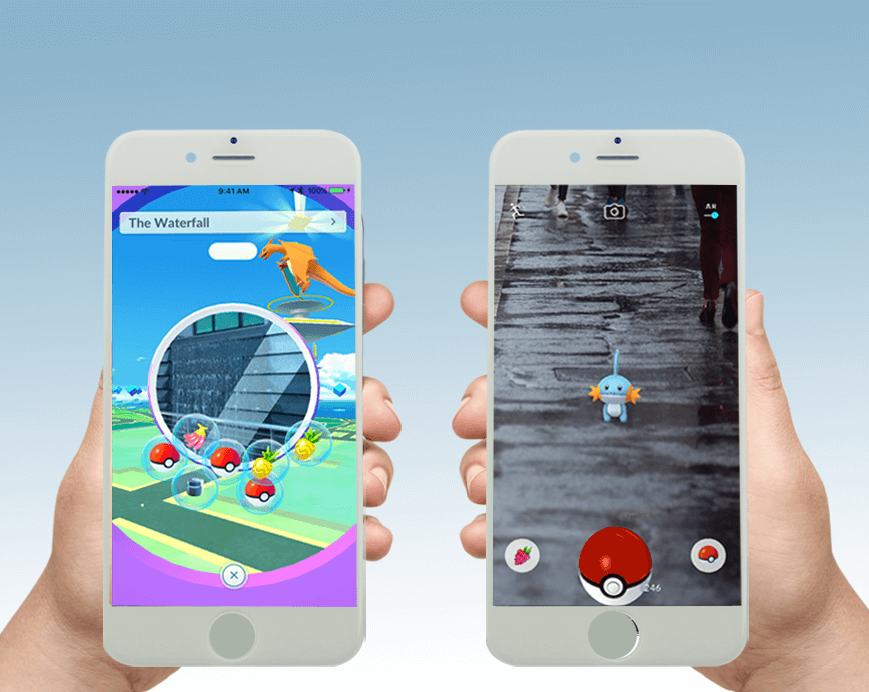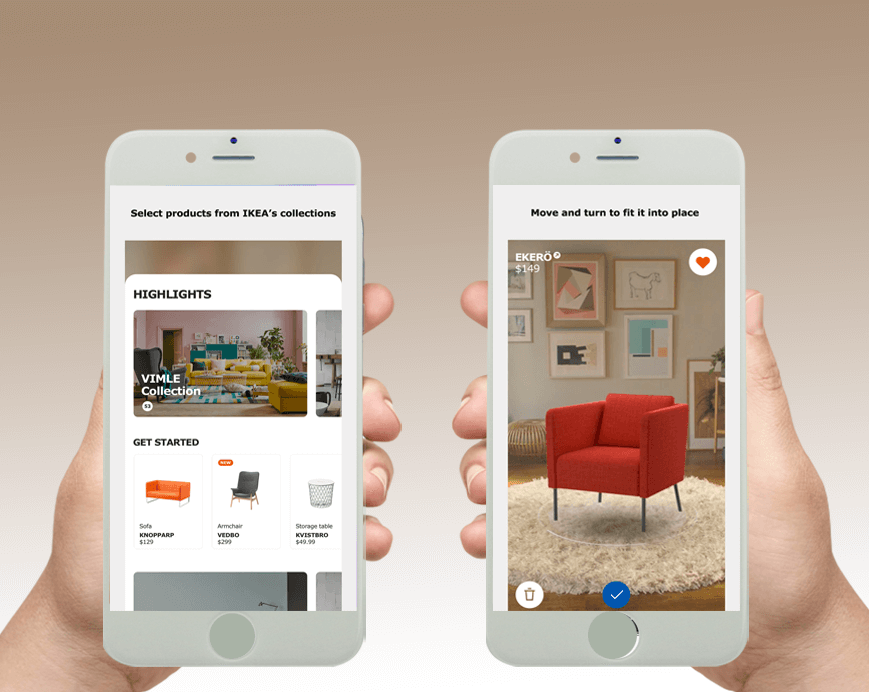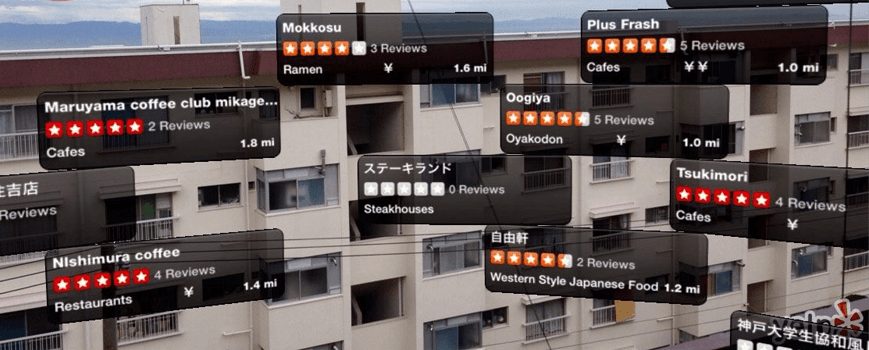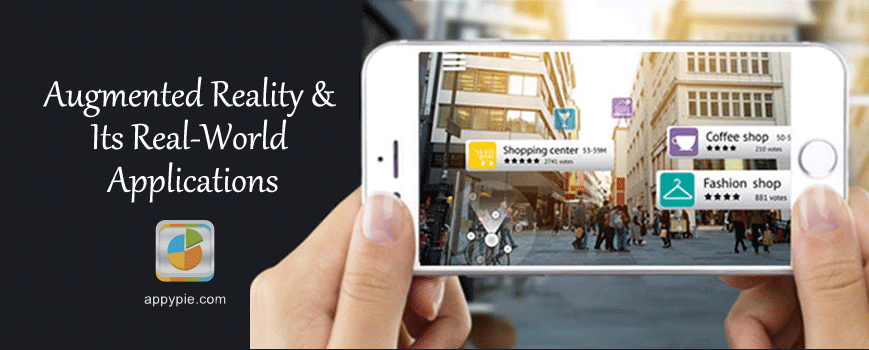Augmented Reality & Its Real-World Applications

By Abhinav Girdhar | Last Updated on April 11th, 2024 11:31 am
App Builder Appy Pie, February 23, 2018: The latest buzzword in the world of technology Augmented Reality or AR has found its way into our lives and even in our everyday vernacular. It would be shocking to come across anyone who hasn’t yet heard of it. It has found application in a number of things starting from gaming to ecommerce to education and healthcare.
What is Augmented Reality?
Even though most of the people have heard about it, there is a great number who have trouble understanding what it is all about. Augmented reality is essentially a placement of virtual or digital elements in the real-world environments. These virtual elements or objects can be in the form of images, or videos, or even interactive data. Hence, what happens in Augmented Reality is that you would see the real world which would be supplemented with digital objects. Let’s try and get into it with an example. Let’s say you want to buy a couch for your lounge area, but you are not so sure which one and what size would look the best in this space, what colors would look the best, or which style would go the best with your décor. It is impossible to bring every single chair that you like into your house, and this is exactly where AR or Augmented Reality can step in. With this technology you would be able to check how different office chairs or standing desks" rel="nofollow noopener noreferrer">standing desks look in your room and which one you like the most. As per a recent research it has been predicted that by the year 2021 the revenue generated by the Augmented Reality/Virtual Reality market would reach $108 billion, and Augmented Reality would contribute to about $83 billion which indicates that it indeed is a burgeoning market. This explains why digital giants including Facebook, Google, and Apple are investing heavily on it, and the small businesses too are following suit. So, if you are among those who are looking forward to creating an augmented reality mobile app, you are going to need a deeper understanding of it and a suitable augmented reality software development kit or SDK. We, at Appy Pie are here to help you by letting you know the kinds of SDKs available in the market for augmented reality and what are the criteria that you must consider while selecting the software that you would be using to build your augmented reality app.
Types of AR Applications
Let’s begin by first attempting to understand the two different types of Augmented Reality applications, so that you can decide which type of AR app are you going to build.Marker Based AR App
The marker based augmented reality mobile apps are essentially based on image recognition. These apps generally use the camera built into a mobile device and detects markers or patterns, for example images or even QR codes. After recognizing this marker or pattern, the AR mobile app then juxtaposes digital information on it. Some of the most advanced SDKs for augmented reality can even support the recognition of real life objects or 3D markers as they are referred to.Location Based AR App
The second type of augmented reality mobile apps are the location-based ones. These apps do not need the markers like we talked about earlier, but in place of that, they use GPS, accelerometers, digital compasses, and other such position detectors to ascertain your location and generate augmented reality objects. One of the most popular examples of this is the game Pokémon Go that went viral recently. There are other applications like the ones that can give you direction to where your car is parked in a big parking lot.Choosing the Right Augmented Reality Software Development Kit (SDK)
Augmented reality mobile apps might be a novelty, but there are a lot of augmented reality development kits available today because of its popularity. The choice is definitely not going to be an easy one. The most important thing to remember here is that you must consider the core functionality of your mobile app before choosing the SDK. Listed below are some of the salient criteria that you must pay attention to, that would help you decide which SDK to go for.#1 Type of License
For any entrepreneur, money should be at the top of the list of things to consider. It is therefore important that you check out the various kinds of licenses being offered by each of the augmented reality SDKs. There, of course would be free licenses and commercial ones too. Though free ones are obviously attractive, but they will offer limited functionality. If you want to build a function rich augmented reality mobile app, you must acquire a commercial license.#2 Supported Platforms
Which platforms do you want to build your app for? Of course, almost all of the good augmented reality SDKs would support iOS and Android. If, however you decide to develop an app for let’s say Windows, then you would have to check out which SDKs support the platform. There are some augmented reality SDKs that are compatible with the Universal Windows Platform or the UWP which can help you create AR apps for smartphones and computers, also, there are augmented reality platforms that can let you create AR apps for macOS. Even if you do not need these features now, you must keep an open mind for the future.#3 Smart Glasses Support
Most of the augmented reality apps function through smartphones today, where the users can see the virtual objects on the mobile or smartphone screens. Smart glasses are the hottest thing though! Using smart glasses means that you would not have to carry the mobile device around in your hands, leaving them free to pursue other actions. So, when you choose an SDK that provides you smart glasses support, you get an early mover’s advantage and start building AR mobile apps that belong in the future.
#4 Unity Support
One of the world’s most advanced game engines, Unity is typically used to create computer and console games. However, it is also capable of powering augmented reality mobile apps. It can help you create some truly amazing graphics for your AR mobile app. It is wise therefore to consider the compatibility of the SDK with Unity. Nevertheless, quite a few businesses prefer to build native apps on iOS & Android, because Unity can be quite resource-intensive.#5 Cloud Recognition
In case the AR mobile app that you are planning to build needs to recognize a great number of different markers, then you must check whether the SDK supports cloud recognition. Using cloud recognition would store the markers on the cloud and not the device, leaving it free to work in the best way. the number of markers that your app would need to recognize is important too, because even though there are SDKs that support a hundred markers, there are others that support thousands.#6 On-Device (local) Recognition
If the app you are going to build needs only a limited number of markers, it is a good idea to consider an SDK that supports local recognition or on-device recognition. Since the markers here would be stored on the device, the user need not go online to use the app.#7 3D Tracking
The augmented reality platforms that are at the top today have 3D image tracking support, hence they have the ability to track 3D objects like mugs, chairs, cubes, or other such real-life objects. The scope and opportunity of the mobile app goes through the roof with this feature. For example, imagine an augmented reality app for gaming or e-commerce that has 3D tracking incorporated in it! the experience would be exemplary!#8 Geolocation
This is a necessity when you are creating a location-based AR mobile app. Let’s say you want to incorporate virtual points of interest to your AR application which might show you the nearest fueling station, or cafes, you would then need an SDK that supports geolocation. Pokémon Go needed it too!#9 Simultaneous Localization and Mapping (SLAM)
It might sound intimidating when we say Simultaneous Localization and Mapping, but the core of the technology is actually simpler than you’d think. SLAM lets the AR apps map an environment and track their own movements in it. It makes it possible to create maps for indoor navigation. While GPS doesn’t work indoors, SLAM does. This presents immense opportunities for AR mobile app development.Real World Applications of Augmented Reality
Now, you have a clear idea about what Augmented Reality mobile app is all about and how it works, you must also know about the industries where this technology can be applied. You might be tempted to say gaming, and you would be right, but there is so much more to it than just that. Augmented Reality and its real-life application doesn’t begin and end at Pokémon Go. There are a lot of things that you can accomplish with this cutting-edge technology that has nothing to do with entertainment, but that is probably where it all began at least in the commercial sense of it. Commercially, the first time AR technology was employed was in the year 1998, when the yellow “first-down” line started appearing in televised football games. Let us delve a little deeper and discuss the various industries in the real world where Augmented Reality as a technology has found its application.1) Advertising
This is the one field that has to stay abreast of every possible trend that is doing the rounds. Whether it is the economy, sports, politics, or any other field under the sun, Advertising needs to be ahead and in-sync with everything. Technology is probably the single most important field for advertising to stay on top of all this and more. Augmented Reality can be a big tool for the advertisers and the marketers especially when they want to reach out to their customers in an efficient manner. It makes advertising a lot more interactive, bringing about a freshness to the content the brands want to send out to their customers. Since AR is immersive, it helps connect with the customers on an emotional level creating lasting relationships. This is especially great in the context of hyperlocal advertising. The engagement that an augmented reality-based ad can bring not only promotes sale, but more importantly raises brand awareness substantially.2) Manufacturing
For the manufacturing businesses to remain profitable it is important to stay abreast of the latest technologies so that you can maintain a competitive edge in your specific field. Augmented reality has the potential to make the companies enhance their productivity and quality. Though there are many ways and steps where this intervention may prove profitable, but workers in the manufacturing industry can make use of AR gadgets and bring down the scope of human error, save up on time, and increase their overall efficiency.3) Retail
This is a digital era in every manner thinkable and the shopping trends have changed in sync with that too. Today millions of customers go online for shopping and quite a few of them have come to prefer it as compared to brick and mortar shops. And why not? Online shopping saves them a lot of time, it saves them money as they can compare a lot many deals without having to leave home, while they are at the workstation or just chilling at home. However, what happens when a customer doesn’t like what they get? This can not only mean a lot of hassle for the retailer, but also a big disappointment too! So, when a retailer makes an augmented reality mobile app for their business, they are taking care of this unpleasant situation. With the help of AR e-commerce apps, the customers can virtually view and even try on these new products to be sure of the way it is going to look on them. IKEA Place is one of the most popular examples of AR in online shopping where the users can see if a particular piece of furniture from the catalog is suited to their space.
4) Navigation
One of the iconic real-world application of AR is in the field of navigation. The basic idea is to superimpose virtual objects or digital elements in real world elements, objects, or environment so that users can get directions and guidance to reach from one point to the other. Quite a few businesses have begun using AR navigation to attract and guide these people to their stores. Yelp does this amazingly well with their Monocle option which gives you options of cafes and restaurants in the vicinity.5) Maintenance & Repairs
Today when something you use breaks down, you have two options, either you do it yourself or hire a professional to do it for you. When you do not know how to repair it, you are going to have to go through a good number of DIY videos and other tutorials. With augmented reality however, you have a whole new option in front of you now. Augmented reality apps of today can actually help you perform the repair in real time. Inglobe Technologies has an AR mobile app that effectively uses augmented reality solutions to help the users carry out maintenance and repairs of their automobiles.Create Your Own Augmented Reality AppRelated Articles
- 7 Essential Business Podcasts for Entrepreneurs & Small Business Owners
- Practical Applications of AI Text to Video generation across industries
- Best Free Football Streaming Websites
- Wix vs. Weebly: Which Website Builder Should You Use?
- Top 10 Android Apps- How to Create an Android App?
- How to DM on Instagram to Engage Leads
- A Beginner’s Guide to Designing an Email Newsletter [Tips, Ideas, and Examples]
- Customer Service Objectives: Definition and Key Elements of Good Customer Service
- Best Cloud Storage Apps for Businesses [2023]
- 16 Ways to Generate More Leads for Lawn Care Services
Most Popular Posts
- Top 20 Best Content Management Systems for Your Website
- How to Use Facebook Messenger Bots for Business?
- EventEgo3D: 3D Human Motion Capture from Egocentric Event Streams
- Navigating the Leadership Landscape: A Comprehensive Guide to Understanding and Employing Effective Leadership Styles
- 5 Best Secure Messaging Apps to Use in 2024
